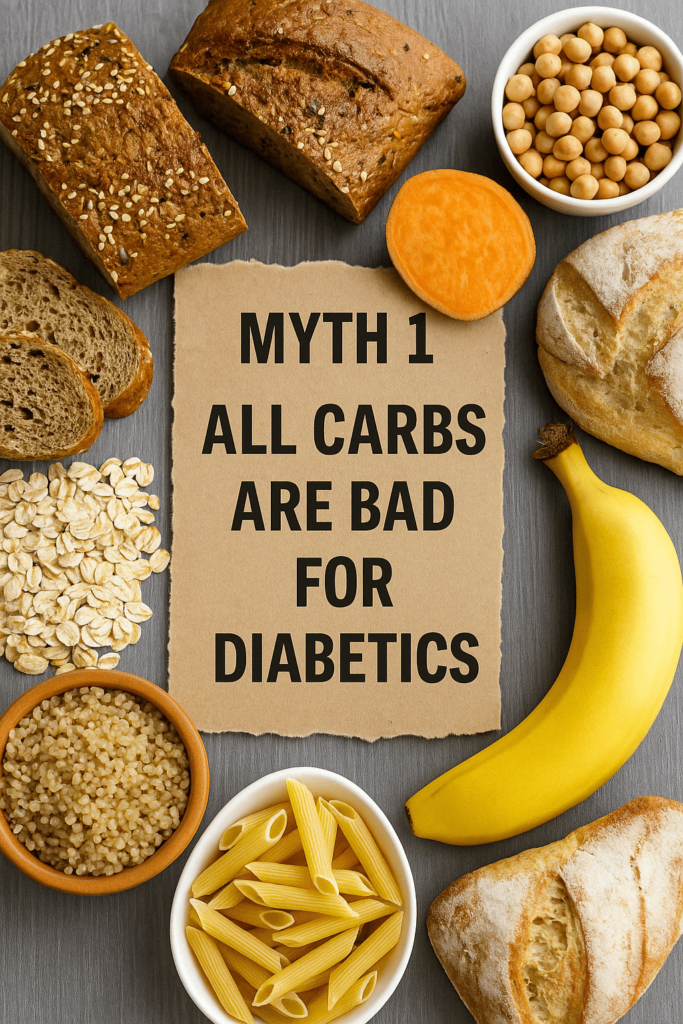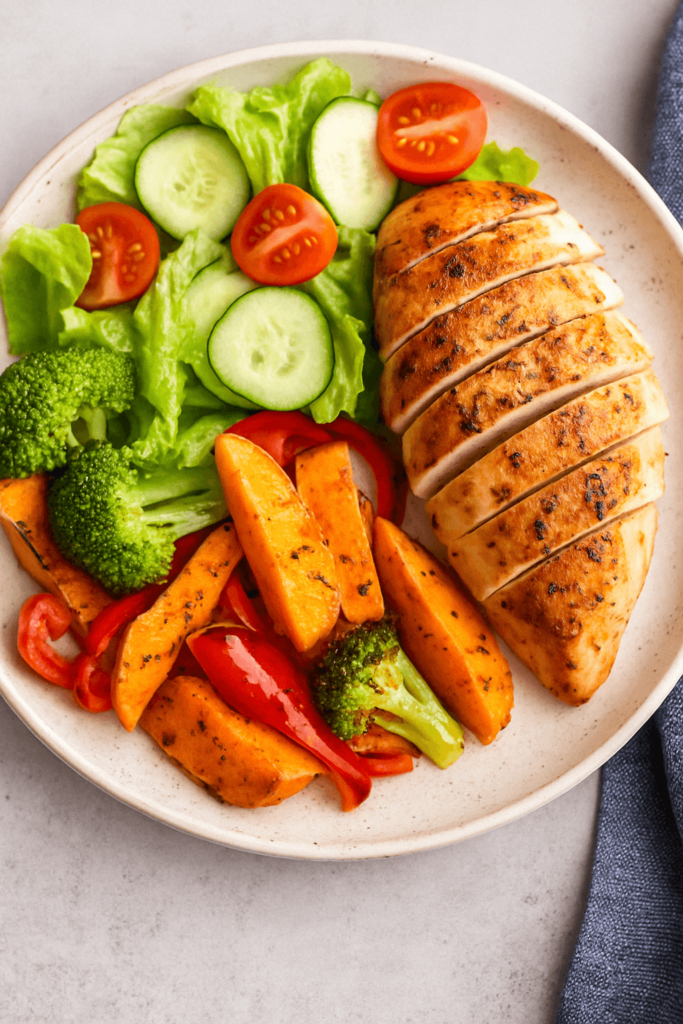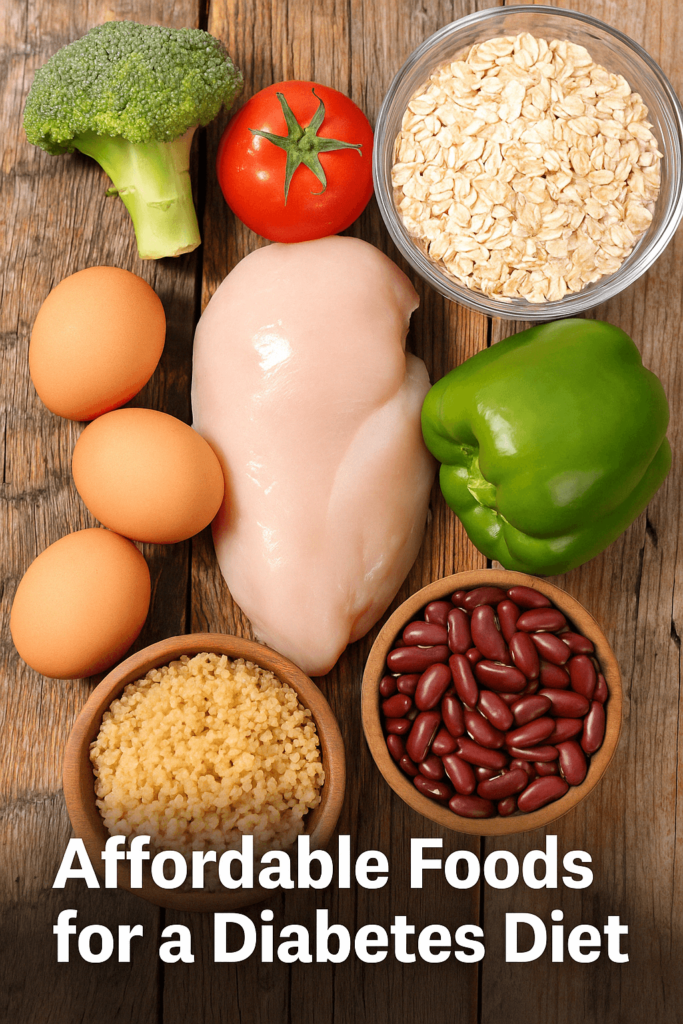
5 Common Myths About Diabetes Diets Debunked
Managing diabetes can feel like a constant battle, especially with the overwhelming amount of advice and conflicting information available. Many myths persist about diabetes diets, leaving people with confusion about what to eat and how to manage their health. In this article, we’ll address five common myths about diabetes diets, debunk them, and offer real solutions to make your journey with diabetes easier and more enjoyable.
Myth 1: All Carbs Are Bad for Diabetics
The idea that all carbohydrates should be avoided is one of the most prevalent myths surrounding diabetes. Carbohydrates are often blamed for causing blood sugar spikes, leading many to believe they should be completely eliminated from a diabetic diet. However, not all carbs are equal, and many are essential to a balanced diet.
Understanding Carbohydrates

Carbohydrates are one of the three macronutrients, and they provide your body with energy. The key to managing diabetes is understanding the difference between simple carbs (like sugar and refined grains) and complex carbs (like whole grains, legumes, fruits, and vegetables). Simple carbs break down quickly, causing a rapid increase in blood sugar levels, while complex carbs digest slowly, providing a more stable source of energy.
Healthy Carb Choices
Diabetics should focus on consuming healthy, complex carbohydrates that are rich in fiber. Whole grains, such as brown rice, quinoa, and oats, are excellent choices as they help regulate blood sugar. Vegetables, especially non-starchy ones like spinach, broccoli, and bell peppers, are also full of nutrients and fiber. Incorporating these into your meals can provide the benefits of carbohydrates without causing blood sugar spikes.
By understanding the difference between simple and complex carbs, you can enjoy a healthy, balanced diet that includes carbohydrates in a way that helps keep your blood sugar levels in check.
Myth 2: Diabetics Can’t Eat Sweets or Desserts
The myth that diabetics must completely avoid sweets is deeply ingrained in many people’s minds. While it’s true that too much sugar can cause blood sugar levels to spike, completely banning all sweets and desserts is unnecessary. The real issue is moderation and balance.
The Truth About Sugar and Diabetes
Sugar, in and of itself, isn’t the villain—it’s the quantity and frequency with which it’s consumed. The key to enjoying sweets as a diabetic is moderation. Instead of cutting out desserts entirely, diabetics can enjoy small portions and balance them with healthy, nutritious meals throughout the day. Additionally, there are many alternatives to traditional sugary desserts that can be just as satisfying.
Healthy Dessert Options for Diabetics
There are many diabetic-friendly dessert options that can satisfy your sweet tooth without wreaking havoc on your blood sugar. You can make sugar-free puddings using natural sweeteners like stevia or monk fruit. Try fruit-based desserts, such as baked apples with cinnamon or a berry compote. Dark chocolate (in moderation) is also a good option since it contains less sugar and more antioxidants.
A well-balanced diet doesn’t mean you have to give up sweets completely. Instead, enjoy them in moderation while focusing on healthier alternatives that won’t spike your blood sugar.
Myth 3: Diabetic Diets Are Strict and Boring
There’s a common misconception that eating for diabetes means you’re stuck eating bland, tasteless food. Many people think a diabetic diet requires cutting out flavor and variety, but that’s far from the truth.
Busting the Bland Food Myth

Diabetic diets don’t have to be monotonous or restrictive. In fact, there are endless possibilities for creating exciting, flavorful meals. The focus should be on nutrient-dense foods, including lean proteins, healthy fats, and plenty of vegetables, but these ingredients can be combined in a variety of ways to create mouth-watering dishes.
Spicing Up Your Diabetic Diet
Herbs, spices, and seasonings are your best friends when it comes to adding flavor to your meals. Instead of relying on salt, try adding garlic, ginger, turmeric, basil, or rosemary to your dishes. You can experiment with different cooking methods, like grilling, roasting, or air frying, to bring out the natural flavors in your food. Using ingredients like olive oil, balsamic vinegar, and fresh citrus can also elevate the taste without adding extra calories or sugar.
With the right ingredients and cooking techniques, you can enjoy a wide range of flavorful meals that keep your blood sugar in check without sacrificing taste.
Myth 4: Diabetics Should Avoid All Fats
The myth that all fats are bad for diabetics is a common misconception that can lead to unnecessary dietary restrictions. While it’s true that certain types of fats can contribute to weight gain and increased risk of heart disease (a common complication for diabetics), healthy fats are an essential part of a balanced diet.
The Role of Healthy Fats in a Diabetic Diet
Healthy fats, such as those found in avocados, nuts, seeds, and olive oil, are critical for maintaining healthy cholesterol levels, reducing inflammation, and improving overall heart health. These fats also provide satiety, meaning they help you feel fuller longer, which can prevent overeating and help manage weight.
Good vs. Bad Fats
Not all fats are created equal. Saturated fats and trans fats (found in processed foods, baked goods, and fast food) should be minimized, as they can increase cholesterol levels and raise your risk of heart disease. On the other hand, monounsaturated fats and polyunsaturated fats (found in foods like avocados, fatty fish, and nuts) are heart-healthy and can actually improve your overall well-being.
Incorporating healthy fats into your meals can support your diabetes management and overall health, without the fear of gaining weight or compromising heart health.
Myth 5: Diabetics Need Special, Expensive Foods
Many people believe that managing diabetes requires purchasing special, expensive foods sold at “diabetic” stores or pharmacies. This myth is not only inaccurate, but it also creates unnecessary financial stress for individuals living with diabetes.
Whole Foods Is Your Best Option

The reality is that diabetics don’t need to buy expensive, processed “diabetic foods.” Instead, focus on whole, unprocessed foods that are naturally diabetic-friendly. Vegetables, fruits, lean proteins, legumes, and whole grains are all affordable and nutritious options that provide the essential nutrients your body needs. These foods are also often lower in sodium, added sugars, and unhealthy fats than packaged “diabetic” foods.
Eating Healthy Doesn’t Have to Be Expensive
Eating a healthy diet on a budget is entirely possible. Buying in bulk, cooking at home, and focusing on seasonal produce can help keep costs down. Simple meals like vegetable stir-fries, soups, and salads with lean protein can be both cost-effective and nutritious. By planning your meals ahead of time and avoiding processed foods, you can save money while eating healthily.
Conclusion
Debunking these common myths about diabetes diets is the first step toward a healthier, more balanced life. By understanding the truth about carbohydrates, fats, sweets, and the foods you need to focus on, you can take control of your health and enjoy a variety of delicious, nutritious meals. Don’t let myths keep you from living your best life with diabetes.
For even more delicious, diabetic-friendly meal ideas, check out The Ultimate Air Fryer Cookbook with Pictures. With simple, healthy recipes that are easy to follow, this cookbook can help you create flavorful, blood sugar-friendly meals right in your own kitchen.
Take Control of Your Health Today!
Ready to dive deeper into managing your diabetes with a balanced diet? “Diabetic Diet After 50” is the ultimate guide to maintaining healthy blood sugar levels, featuring over 120 delicious, easy-to-make recipes, a 4-week meal plan, and expert advice on how to live your healthiest life.
Don’t wait — start transforming your health now! Click below to take the first step towards a healthier future.
FAQs
- Can I eat carbs if I have diabetes?
Yes, carbohydrates are an essential part of a healthy diet. Focus on whole grains, vegetables, and legumes for complex carbs that help maintain stable blood sugar levels. - Are sugar substitutes safe for diabetics?
Sugar substitutes like stevia or monk fruit are generally safe when used in moderation. However, always check with your doctor before incorporating them regularly into your diet. - Can I still enjoy a birthday cake with diabetes?
Yes! You can enjoy cake in moderation. Opt for smaller portions and consider using healthier ingredients, such as whole grain flour or sugar alternatives. - What are some good fats for diabetics to include in their diet?
Healthy fats like those found in avocados, olive oil, nuts, and seeds are beneficial for diabetics. These fats can improve heart health and help with blood sugar control. - How can I make my meals more exciting while managing diabetes?
Experiment with herbs, spices, and different cooking methods to make your meals flavorful. Using an air fryer can help create crispy, delicious meals without excessive oil, making them both healthy and exciting!



